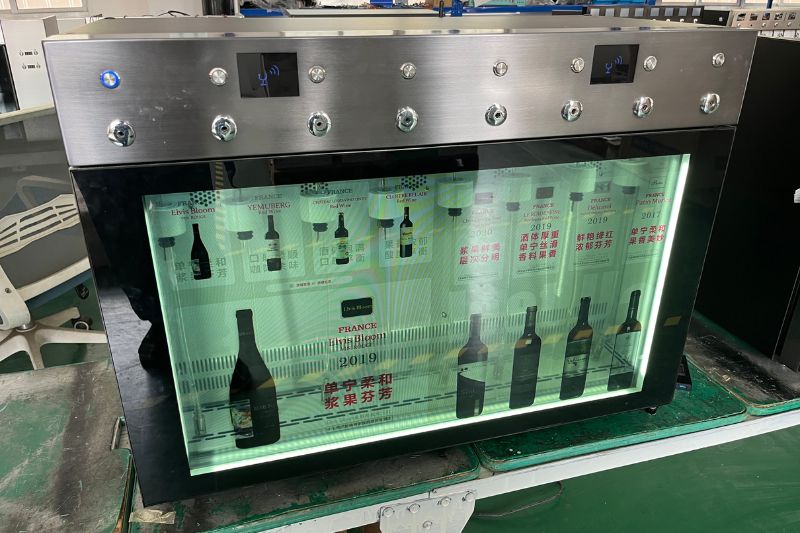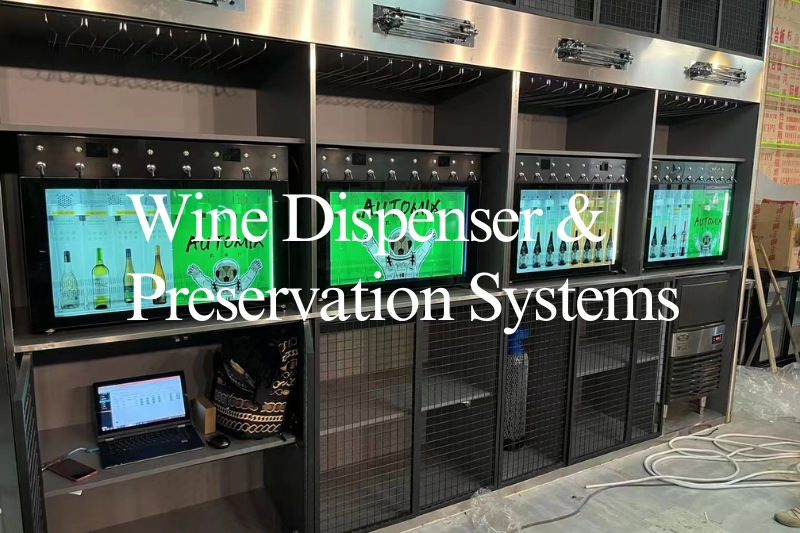In the bustling atmosphere of wine bars and the refined elegance of hotel lounges, the art of offering the perfect glass of wine is paramount.
For connoisseurs and businesses alike, discovering an innovative wine dispenser solution that promises to impeccably preserve and serve each varietal at its optimal condition is not just a desire—it’s an essential quest for quality and guest satisfaction.
Wine dispenser and preservation systems offer an elegant solution, employing various technologies to halt the detrimental effects of oxygen exposure. These systems cater to a spectrum of needs, from the wine aficionado seeking to savor a single glass at a time to the upscale venue preserving high-end varietals for optimal service conditions.
However, the critical decision lies in discerning which system aligns best with one’s personal or commercial objectives, balancing factors such as cost, complexity, and preservation efficacy.
As we explore the intricacies of these systems and their potential to revolutionize wine consumption, it becomes clear that they are more than mere gadgets; they epitomize the intersection of science and the art of winemaking.
The ensuing discussion will unveil how these systems not only protect the wine but also enhance the tasting experience, potentially transforming any setting into a connoisseur’s haven.
Understanding Wine Oxidation
Understanding wine oxidation is fundamental to ensuring that the sensory attributes of wine—its flavor, color, and aroma—remain unaltered after the bottle has been opened. Wine oxidation is a chemical process triggered by the interaction between wine and oxygen from the air. This exposure can lead to the deterioration of wine quality, manifesting as off-flavors reminiscent of nuts or vinegar, along with undesirable changes in color and aroma.
To combat these adverse effects, wine preservation and wine dispensing systems are employed. These systems typically utilize inert gases or vacuum technology to limit the amount of oxygen that comes into contact with the wine. A bottle wine dispenser often features these preservation technologies, ensuring that each pour is as close to the original quality as possible.
Materials such as stainless steel are commonly used in the construction of wine dispensers and preservation systems due to their durability and resistance to oxidation themselves, which further helps to maintain the integrity of the wine.
Types of Preservation Systems
Recognizing the detrimental effects of oxidation on wine, preservation systems have been developed to address this issue, with various types available to cater to different needs and preferences. These systems not only extend the shelf life of an open bottle but also support establishments in maximizing their by-the-glass revenue by maintaining the quality of their offerings.

To make the selection process more approachable, here are some common types of systems used in the industry:
- Vacuum Technology: Removes air from the bottle, creating a vacuum seal that slows down oxidation.
- Inert Gas Systems: Argon or nitrogen gas is used to displace oxygen in the bottle, preserving the wine’s integrity.
- Electronic Preservation: Advanced systems that use electronic controls to manage the preservation environment within the bottle.
Each of these systems offers a unique approach to wine preservation. Vacuum technology is often found in personal and smaller-scale settings. In contrast, inert gas systems, such as those using food-grade Argon gas like Wineemotion’s dispensing systems, are favored in commercial environments for their effectiveness and ability to integrate with other technologies. Electronic preservation systems provide precision and can be tailored for high-end wine dispensing applications.
Choosing the right preservation system is crucial for ensuring wine remains in peak condition, enhancing the overall tasting experience and operational efficiency.
Choosing the Right System
Selecting an optimal wine dispenser and preservation system hinges on assessing your specific needs, whether for a bustling restaurant or a connoisseur’s home collection.
For commercial establishments seeking to maximize by-the-glass revenue, investing in a system that offers precise portion control can be crucial. This not only eliminates waste but also ensures consistent quality with each pour. As such, the types of systems that feature advanced preservation capabilities can be the perfect solution, maintaining the wine’s flavor and bouquet over extended periods.
When considering the types of systems available, factor in the capacity required to meet your demand. An advanced wine dispenser that can handle a high volume without compromising on the quality of preservation is ideal for commercial settings. Additionally, look for features that align with your operational needs, such as temperature control to serve wine at optimal conditions, minimal environmental impact, and the versatility to accommodate different types of beverages.
Durability, ease of maintenance, and preservation duration are also key considerations. A system that uses gas efficiently and can be integrated seamlessly with your existing operations will provide the best return on investment. By carefully evaluating these factors, you can choose a wine dispenser and preservation system that aligns with your preferences and business model.
Maintenance and Care Tips
Having chosen a wine dispenser and preservation system that meets your needs, it’s essential to focus on proper maintenance and care to ensure the longevity and performance of your investment. These advanced wine systems, designed to serve wine at its best, require regular attention to continue providing excellent customer experiences.
To maintain your system effectively, consider the following maintenance and care tips:
- Regular Cleaning and Sanitization: Keep your system hygienic and maintain wine quality by cleaning and sanitizing it regularly. This will help prevent the buildup of residues and ensure the best taste for your wine.
- Part Replacement and Inspection: Monitor and replace any worn or damaged components, such as seals and hoses, to avoid leaks or other issues that could compromise wine preservation.
- Calibration and Monitoring: Regularly check the system’s temperature and pressure settings and calibrate as necessary to ensure the system operates at optimal conditions for preserving and dispensing wine.
Adhering to these tips and following the manufacturer’s program for warranty policy, operating, and repair instructions will help optimize the longevity of your system.
Evaluating System Durability
When assessing the durability of wine dispenser and preservation systems, it is crucial to examine the robustness of the materials and the construction quality to ensure they are capable of enduring frequent use and extending the system’s lifespan. The strength and reliability of components are vital for consistent operation. A company’s confidence in their product can often be measured by their warranty policy, which should be considered when evaluating the potential for long-term service and repairs.
Customers should look for types of systems with a proven track record for longevity and a resistance to wear and tear. Thoroughly reviewing customer feedback can offer insights into the durability of various systems. Here is a table highlighting key aspects to consider:
| Factor to Evaluate | Importance for Durability | Details to Consider |
|---|---|---|
| Material Quality | High | Resistance to corrosion and damage |
| Component Strength | High | Reliability of mechanisms and parts |
| Warranty Policy | Medium | Length and coverage of warranty |
| Environmental Resistance | Medium | Tolerance to temperature, moisture, and light |
Determining which dispenser is the perfect fit includes considering its ability to maintain peak performance under various operating conditions.
Frequently Asked Questions
Conclusion
In conclusion, the advent of wine dispenser and preservation systems marks a significant advancement in the field of oenology.
These systems offer sophisticated solutions to combat wine oxidation, thus ensuring the integrity of the wine’s flavor and aroma over extended periods.
With various technologies available, from vacuum sealing to inert gas preservation, the selection of an appropriate system requires careful consideration of the user’s needs and preferences.
Regular maintenance enhances the longevity and effectiveness of these systems, making them an indispensable tool for wine aficionados.


